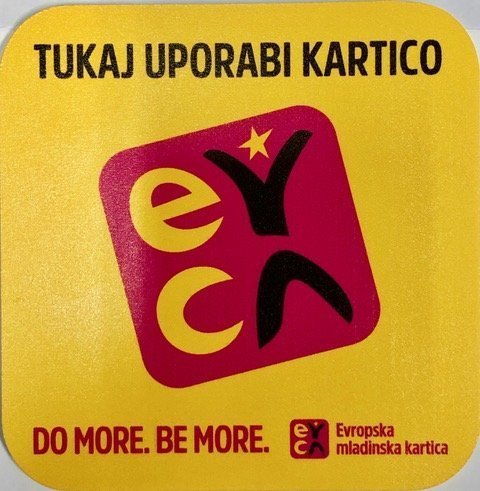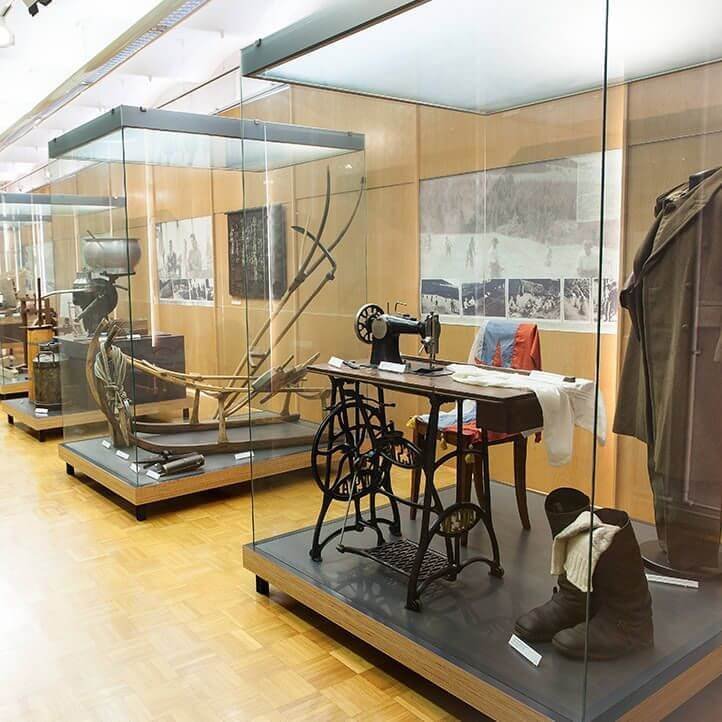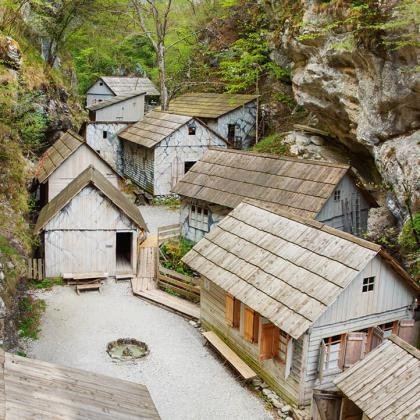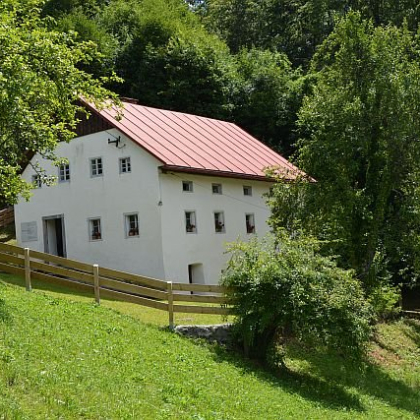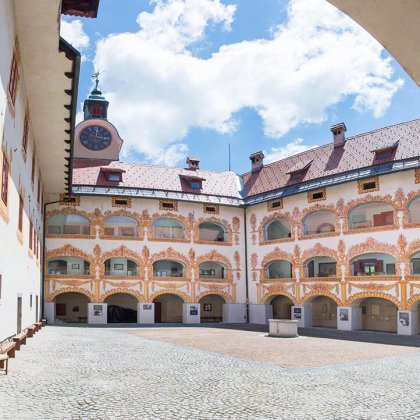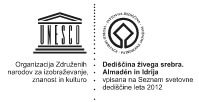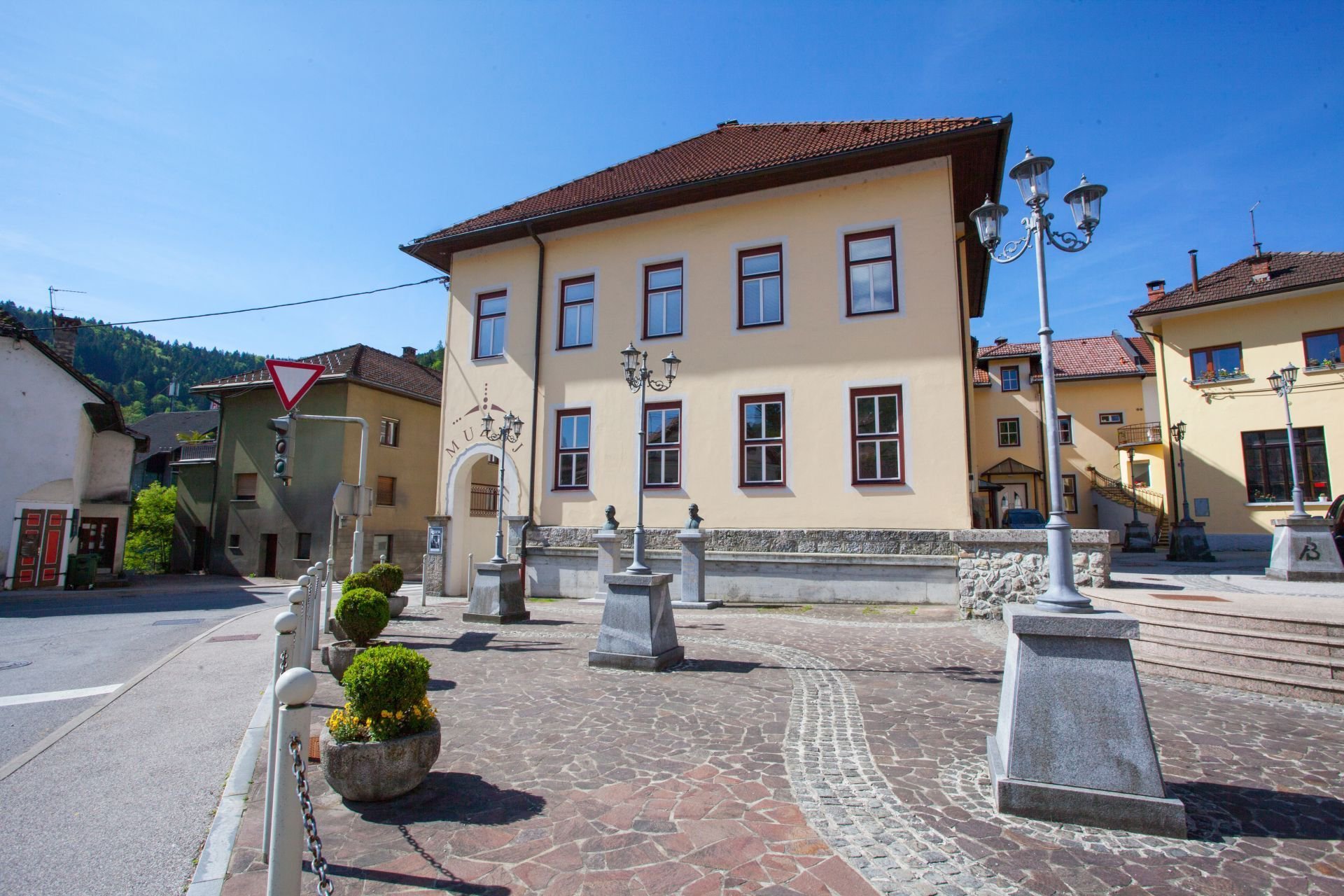
Small and friendly museum
We at the Cerkno Museum study the past of Cerkno, the landscape where two worlds meet – the Alpine and Primorska region, at the historical draughts of different cultures, and the land and country formations; where here was a border of the Venetian Republic in the beginning of the 16th century, where here was a border between the Gorica and Carniola regions and later the border between Italy and the Kingdom of Serbs, Croats and Slovenes, and Yugoslavia later on. The cultural identity of the geographically rounded area with the administrative and economic centre in Cerkno is presented in two permanent exhibitions: “The Cerkno Region Through the Centuries” and “It’s the Carnival’s Fault!: The story about the runners (laufarji) from Cerkno”. The museum also organises occasional exhibitions, including the most recognised annual summer lace exhibitions and biannual international exhibition called “The Mask in the Time of the Carnival”, it organises lectures, presentations, and museum workshops for children as well as various educational programmes related to the contents of the museum exhibitions, Franja Partisan Hospital and the writer France Bevk’s homestead in Zakojca.
The Cerkno region — the world at the border
The “The Cerkno Region Over the Centuries” exhibition presents the historic development of Cerkno from the first written references in the middle of the 13th century until the end of the 20th century, as well as the way of life of the locals who lived in these gorges and ravines.
The story of the past centuries runs along the symbolic canal once used for the water to the mill wheel. In the second half of the 20th century, the mills gradually ceased to operate, so the canal “breaks” at this point or changes direction, with a construction with two millstones set next to it. The water from the canal can’t flow to the big mill wheel as it has long since failed to survive the ravages of time, and the millstones can no longer turn. The living flow of the history runs on, so the canal divides and carries on, although in the other direction, and even though it is relentlessly leaving behind everything that isn’t good enough for development. We at the museum took these remnants in order to preserve them for the future. The historic review, divided into ten areas of content of different scopes, also includes the presentation of some important cinematographic countrymen (Dr Frančišek Sedej, France Močnik, France Bevk…). On the other hand, there are many objects, photographs and documents that present a typical Cerkno homestead, its everyday and holidays, various farm tasks, crafts and changes that have been gradually introduced by industrialisation in the way of life of Cerkno villages. It was largely influenced by the development of the ETA factory in Cerkno, which has intervened in all areas of life.
The exhibit is a homage to many generations of Cerkno, who have persisted in this hard and merciless peasant world for centuries.
Why do we have to kill a Carnival so the spring could come?
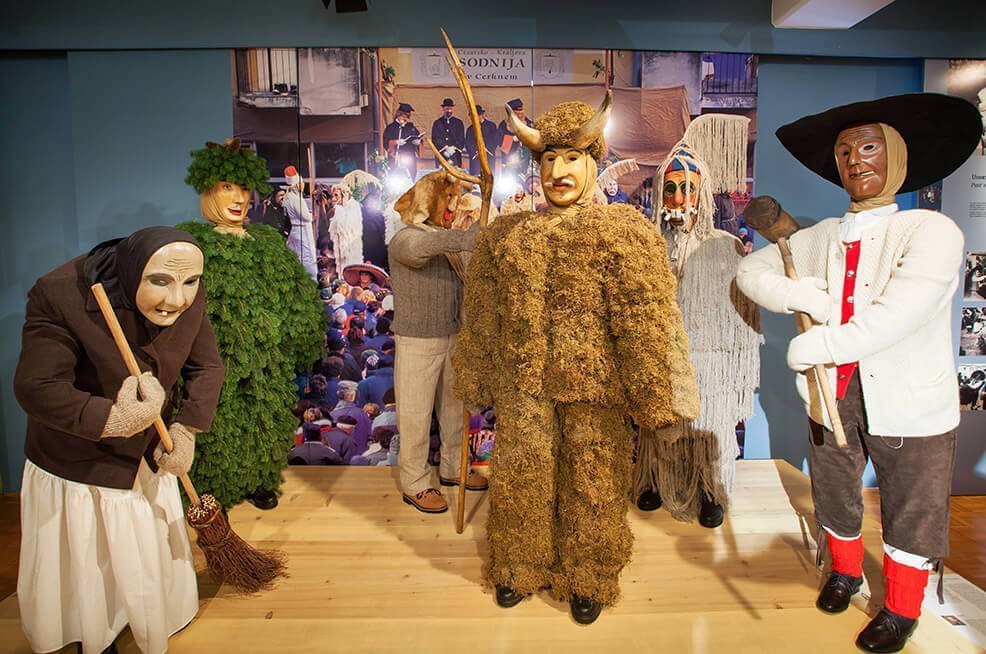
People always attributed special powers to the masks, which have been stirring people’s imaginations since ancient times. The Cerkno runners (laufarji) also have the power and call the spring here every year, bringing the people a good harvest. This used to be a serious task for the boys in the community, and today it is only a part of the preserved and, above all, carefully documented carnival heritage, which was once again brought back by the Cerkno inhabitants in 1956, after over 30 years. It is a living museum in which the “people’s game” is held, successfully interpreted by the members of the »Laufarija Cerkno« society. You can learn about the runners (laufarji), the connected ancient beliefs and the mythical stories in the Cerkno Museum throughout the year. The “It’s the Carnival’s Fault!: The story about the runners (laufarji) from Cerkno” exhibition presents all 25 carnival characters – runners, their outfits where the wooden head masks (larfas) stand out as well as clothing with straws, pine twigs, moss and ivy sewn on it, the course of the annual ceremony is presented – from gathering of gifts, Sunday patrols to the final judgment at the Main Square (Glavni trg), where the Carnival is condemned for all the transgressions it has committed in the past year and is finished off by the hit of the bôt – a large log hammer. Besides the oldest archaic masks originating in pagan times (the Thread Man, the Old Mana and the Old Woman, the Basket Woman), there are also representatives of various social (Mister and Madam) and the occupational groups (the Peel Man, the Fur Man, the Straw Man), as well as the characters embodying human special features, weaknesses and diseases (the Drunk Man, the Drunk Woman, the Scabby Man). The exhibition is accompanied by multimedia visualisation with a number of photographs and film passages in four languages.
In 2012, the “Cerkljanska laufarija” was entered in the Slovenian Register of Intangible Cultural Heritage and two years later was named intangible heritage of national significance.
About the history of the museum house
The building where the Cerkno Museum is located in is found the middle of the settlement. The building was built just before the First World War as the headquarters of the district court. Between the two wars, the Italian occupation and fascism, Italian financial guards and the king’s carabinieri were accommodated there. During the Second World War, some partisan organisations were there, the lower high school and later an elementary school after the war. In 1978, the museum was established as the National Liberation War Department of the Idrija Municipal Museum and is Cerkno Museum today. The building was completely renovated in 1998–1999 and new modern exhibitions set in it.
Programmes for adult groups
Cerkno Museum in Cerkno
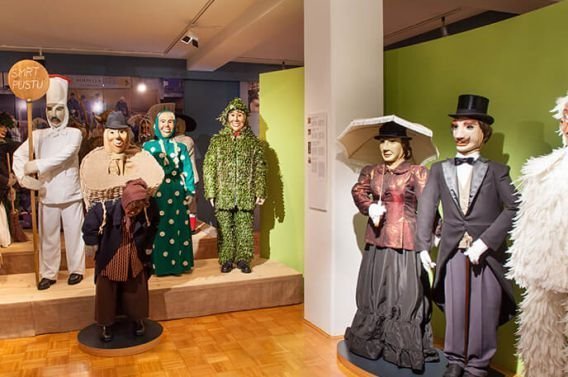
Not only during the carnival, the runners (laufarji) are here all year around! The name “laufarji” is derived from the German word “laufen” (to run) and was given to them because the Thread Men – one of the main characters – are constantly running and jumping around. A special feature of the Cerkno runners are the head masks or larfas made of lime-wood. Don’t let the Ta terjast Thread Man scare you at the exhibition and walk through the stories of over 200 exhibited items about life and the economic, social and cultural development of the Cerkno region from the 11th century on. Today’s young people don’t know many of them!
School programmes
It’s the Carnival’s fault!: The story of the runners (laufarji) from Cerkno
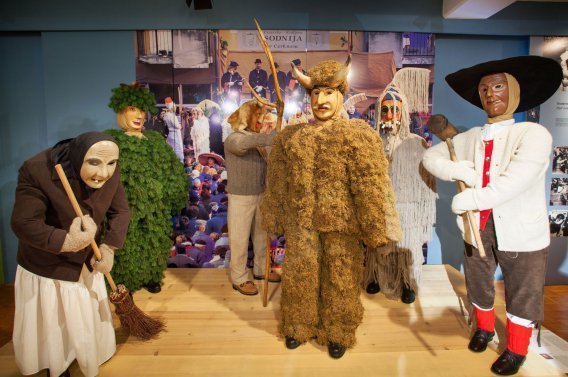
Opening hours
Cerkno Museum
Tour:
Special features
The Cerkno Museum is located at the former court building in the centre of Cerkno, at the intersection of Bevkova ulica and Platiševa ulica. Walk up the stairs at the intersection to the entrance. You can park right at the museum on weekends, but must find a parking space in other carparks during the week. The parking place we recommend for buses is approx. 300m away next to the fire station. Passengers can get off the bus at the museum and the driver will find a parking space.
